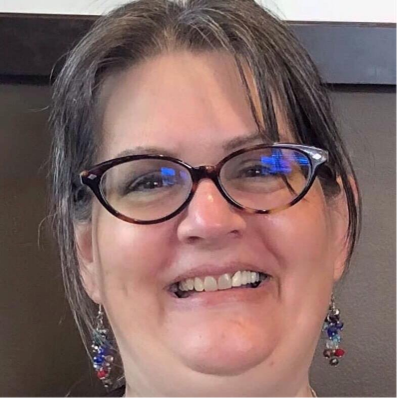Posted
Categories: Working Together for Better Health Care
The Shared Care team at Providence Health Care has been connecting with patient partners since the beginning of the Patient Voices Network – 11 years and counting! Since its first engagement in 2010, which resulted in winning a national award for the Rapid Access to Consultative Expertise (RACE) project, the team has harnessed the power of patient voices in dozens of quality improvement projects.
“It has been really fantastic over the last 11 years, working with PVN to create and shape patient-centred solutions,” said Margot Wilson, Providence Health Care’s Corporate Director of Shared Care & Virtual Health.
This past year, patient partners have been involved in several projects, including establishing a Post-COVID Clinic for patients experiencing “long-haul COVID” and a radiology initiative to improve coordination of patient care in diagnostic imaging. Another initiative, which gained a lot of momentum due to the pandemic, was a virtual psychiatry consultations project.
Improving Access Through Virtual Care
Physician leaders at St. Paul’s Hospital in Vancouver recognized that without timely access to psychiatric care, patients were ending up in the emergency room. Research suggests that 11% of Vancouver City Centre residents have a mood or anxiety disorder,1 83% of patients with a mental disorder are treated by a family physician only,2 and 54% of primary care providers are not satisfied with the mental health care they could provide.3
The development of a virtual psychiatry program was appealing, particularly in the early days of the pandemic, as there was no required travel for patients or physicians and no need for clinical office space. Instead, they could connect from wherever they were, using a computer, tablet or phone. The team assembled a proposal which was funded by Shared Care – a partnership of Doctors of BC and the BC government – as part of the Adult Mental Health and Substance Use Spread Network.
Working Together: Learning from Lived & Living Experience
The project team connected and learned from patients in two ways. Early in the project, they reached out to Coast Mental Health, a local nonprofit serving people living with mental health challenges, to gather feedback from patients via a survey and conversation at an organized meal event. This engagement provided baseline data on patient needs and experiences which informed the project. Then, they connected with the Patient Voices Network to find two patient partners to join the project team.
“It was really helpful having the connection into the Patient Voices Network, to identify the volunteers in the first place. That helped to avoid a conflict of interest that might have arisen if participating physicians were reaching out to their own patients,” shared Claire Doherty, a Project Leader with Providence Virtual Health and Shared Care. “It has also been really helpful to have the structure that PVN provides, because it can be easy to get caught up in the work and forget to loop back and let patient partners know where the project is at. Having those check-ins from our Engagement Leader, Jami, has been really helpful.”
One patient partner, Pat*, was keen to get involved due to the urgency and importance of the problem – access to care from a psychiatrist – which they understood well from their own experiences. “It was an incredibly important solution to a big problem that exists within mental health,” said Pat. “At first I thought they just wanted quick feedback. But no, it was about structuring a lot of project components and how it would all unfold from start to finish,” they continued. “That’s what I loved about it. I was positively surprised because that’s not the case on all projects and committees. Claire reached out to us for all kinds of things and really wanted our input. She really gets what it means to have a patient-centred approach.”
Over a series of Zoom meetings and emails from June 2020 to February 2021, the patient partners, drawing on their lived experiences, provided feedback on project components. This included the training provided to psychiatrists who participate in the program, the software selected for virtual visits, the wording for patient consent documents and referral forms, the scheduling processes and setting targets for the evaluation framework.
Influencing Changes
When reflecting on specific examples of patient partner feedback, and how it influenced the project, Claire shared how patient partners pointed out and remedied stigmatizing phrasing. “At first the referral form said the program was for patients with anxiety, depression, bipolar disorder or stable schizophrenia. One of the patient partners pointed out that by singling out schizophrenia and the need for stability, it implied that people with schizophrenia are normally unstable,” recalled Claire.
Pat remembered this, too. “The phrase ‘stable schizophrenia’ just really brought my hair up. Like, why are the others just anxiety, depression, bipolar – with no mention of severity? That just made me furious. I suggested a change in three meetings until they finally got it,” they shared. “I remember a doctor saying, ‘I never think in those terms, I’ve never thought about it from that point of view.’ And I was able to say, ‘Well yes, you don’t have a diagnosis that is always portrayed negatively,’” said Pat. As Claire explained, “What we really meant was that this service wasn’t appropriate for someone who had active psychosis who hadn’t already received treatment for it. And psychosis is something that can appear with bipolar disorder as well. So, we changed the wording to be clearer.”
The referral form now features more accurate and appropriate phrasing. Regarding the changes to the form, and the conversations about stigma that they required, Pat reflects that, “It was encouraging, and why I keep going with these committees, and why I participate [with PVN].”
Project Outcomes
The program launched on October 30, 2020. As of spring 2021, there are three psychiatrists involved, 13 referring family physicians and over 40 patients referred for care. Psychiatrists are connected with patients through a short-term series of virtual appointments, then provide recommendations back to the family physician who can resume appropriate longitudinal care.
Surveys to assess physician and patient satisfaction with the service are currently under review – but anecdotal feedback received to date has been positive. Although Pat’s participation in the project has formally ended, they continue to be an informal champion for the work and are contributing to the spread of the concept by connecting Claire with other organizations that are interested in similar approaches.
Advice for Working Together
When asked if they had any advice for health care teams working with patient partners, Pat notes that confidentiality works in two directions, and that it is important to have early and explicit conversations about how and if content shared in the group can be shared externally. Doing so can contribute to the sense of safety felt by patient partners, which in turn can influence what and how they are willing to contribute.
“Health care partners usually just bring their professional selves, but patient partners show up and bring their personal selves. We need to think through safety measures. For example, I have a condition that I don’t want disclosed widely, and sometimes I want my participation to be anonymous. Like, I don’t want my name recorded on project documents,” they explained. Claire also notes the importance of aligning patient partner time and effort on parts of a project where they have the most influence and impact.
“Have a really clear plan about what the opportunities for engagement are. I really like the IAP2 spectrum and how it forces people to think about what the actual opportunities for engagement are, so there are clear expectations on both sides,” she said.
As for advice for patient partners, “Speak up!” is Pat’s big message. “You’re there for so many people who are not invited to be there, or not able to be there. You might find you’re outnumbered but speak up! That’s how we make a difference.” Claire agreed, saying that, “Having Pat’s voice at the table was so helpful, and I really appreciated how they were not afraid to stand up and say things like, ‘It sounds like this project has been developed based on the physician needs – how are we considering patient needs here?’ Ultimately patients are the ones who are intended to benefit from the service – we needed to hear what their needs were too.”
An Extra Hope for Patient Engagement
Pat hopes the health care system and individual practitioners pay close attention to biases they have and the stigma that persists towards people with serious and chronic mental illness. They hope that more people with severe mental illness start to participate as patient partners in quality improvement and redesign work in all areas of care, not just in projects focused on mental illness. Pat points out that people with mental illness experience other types of illness and injury too, and that their perspectives are valuable everywhere.
This story was featured in our 2020/21 Annual Report. Read more like it here.
1 BC Ministry of Health, Health Sector Information, Analysis and Reporting Division. Local Health Area Profiles. July 2019.
2 Gilbody S, Sheldon T, House A. Screening and case-finding instruments for depression: a meta-analysis. Can Med Assoc J. 2008;178(8), 997-1003.
3 Clatney L, MacDonald H, Shah S. Mental health care in the primary care setting: family physicians’ perspectives. Can Fam Physician. 2008; 54(6), 884-9.
*This story includes quotes from a patient partner who wishes to remain anonymous and is referred to here with the pseudonym Pat.


